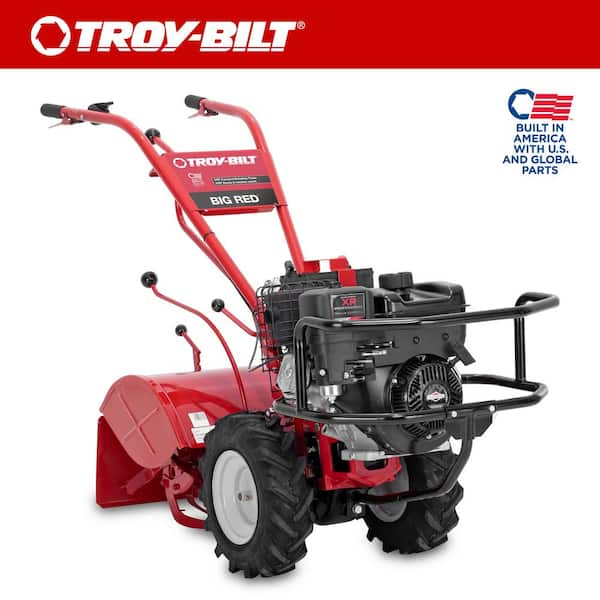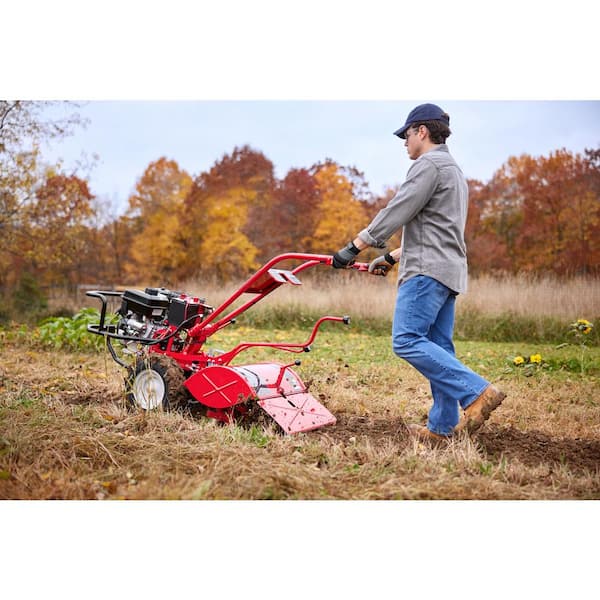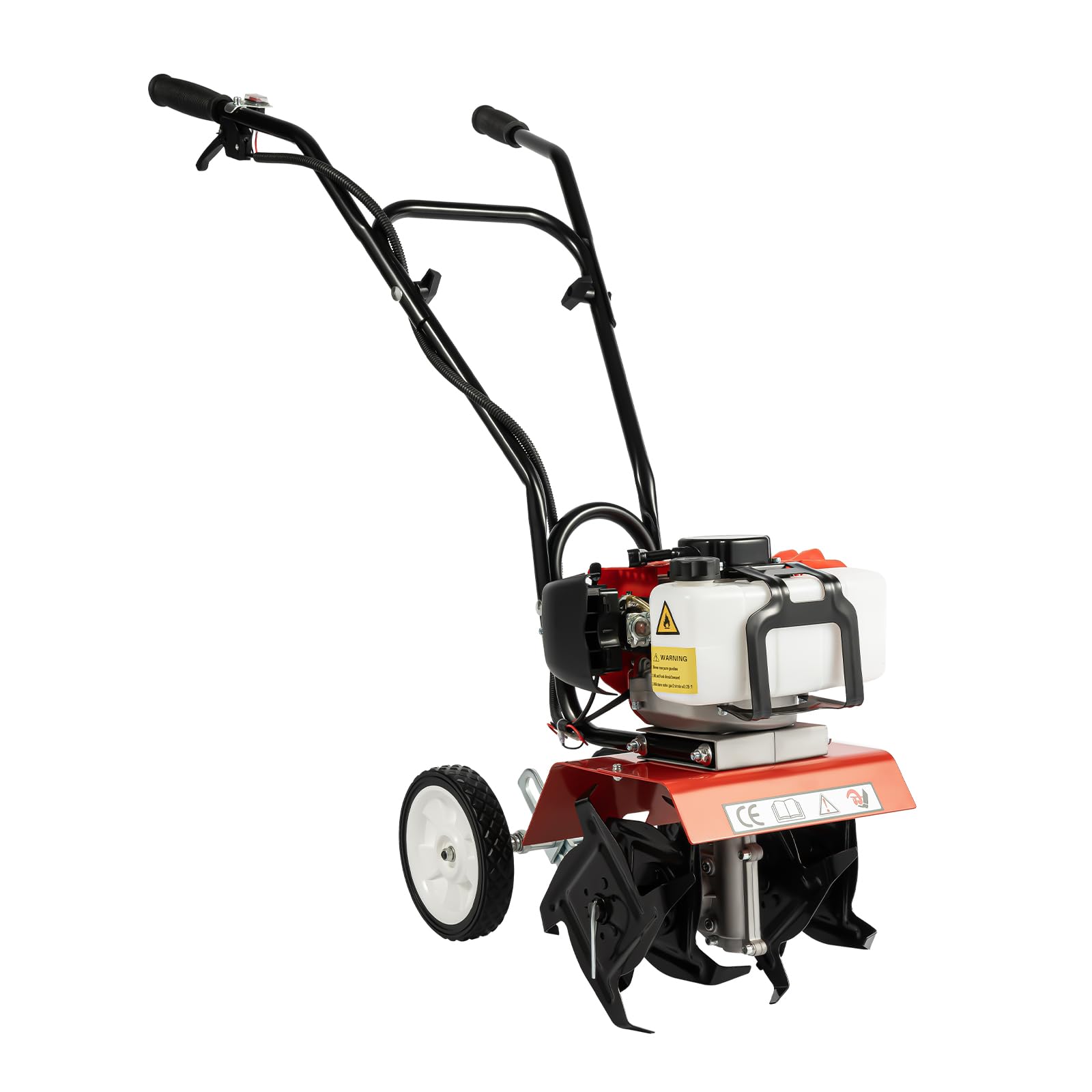As an Amazon Associate, I earn from qualifying purchases.
Starting a gas-powered garden cultivator can seem tricky at first. But with the right tips, it becomes simple and easy.
Garden cultivators are essential tools for gardeners. They help break up soil and prepare it for planting. A gas-powered garden cultivator offers more power and efficiency compared to electric ones. But starting it might pose some challenges, especially for beginners.
Before you get frustrated, be aware that there are straightforward steps to follow. Understanding how to start your gas-powered garden cultivator properly ensures it runs smoothly. It also prolongs its life, saving you time and money. In this guide, we will share some helpful tips. These tips will make starting your gas-powered garden cultivator a breeze. Let’s dive in and get your garden ready for planting!
Choosing The Right Cultivator
Gas-powered cultivators come in different types. Each type has its own use. Front-tine cultivators are good for small gardens. They are easy to use. Rear-tine cultivators are stronger. They work well for extensive gardens with tough soil. Mini cultivators are small and light. They are perfect for flower beds and tight spaces.
Engine power is important. A strong engine makes work easy. Adjustable tines accommodate various soil types. Easy start systems save time. Look for a comfortable handle. It reduces hand strain. Durability is key. A strong machine lasts longer. Fuel efficiency saves money. Select a cultivator with these features for optimal results.
Preparing Your Garden
Soil testing is very important before planting. A test helps you know the soil’s nutrients. Good soil is key for a healthy garden. You can buy a soil test kit from a store. Follow the instructions on the kit. After testing, you will know if you need to add anything to the soil. Sometimes, soil needs extra nutrients. Other times, it needs to be less acidic. Knowing your soil helps your plants grow better.
Before using your gas-powered garden cultivator, clear all debris. Remove rocks, sticks, and old plants. Debris can damage your cultivator. It can also make it hard to till the soil. Use a rake to gather small debris. For bigger items, use your hands or a shovel. Clearing the area makes it easier to work. Your cultivator will run more smoothly. This step helps prepare the ground for planting.
Safety Precautions
Wear protective gear like gloves and safety glasses. Check fuel levels and ensure the cultivator is in good condition.
Protective Gear
Always wear protective gloves to keep your hands safe. Use safety goggles to protect your eyes from debris. Wear ear protection to guard against loud noises. Put on sturdy boots to protect your feet. Dress in long sleeves and pants to shield your skin. A mask can help you avoid inhaling dust.
Safe Handling Practices
Read the user manual before starting. Keep the cultivator on a flat surface. Never refuel the machine while it’s hot. Ensure the area is clear of people and pets. Always check the oil level before use. Keep hands and feet away from moving parts. Turn off the engine before making adjustments.

Fuel And Maintenance
Always use fresh gasoline for your garden cultivator. Old gas can cause engine problems. Look for unleaded fuel with an octane rating of 87 or higher. Avoid fuel with more than 10% ethanol. Ethanol can damage the engine. Store your fuel in a clean, sealed container. Keep it away from direct sunlight and heat sources.
Check the oil level before each use. Use the right type of oil for your cultivator. Clean the air filter regularly. A dirty filter can reduce performance. Inspect the spark plug for wear and tear. Replace it if needed. Tighten all bolts and nuts before starting. Lubricate moving parts to reduce friction. After use, clean the machine to remove dirt and debris. Store the cultivator in a dry place to prevent rust.
Starting The Cultivator
First, place your cultivator on a flat surface. This helps with stability. Check the fuel level and add gas if needed. Make sure the oil level is correct. Use the dipstick to check. Next, find the choke lever. Set it to the “start” position. Press the primer bulb a few times. This sends fuel to the engine.
Now, hold the handlebar firmly. Pull the starter rope quickly. The engine should start. If not, repeat the steps. Once the engine runs, move the choke lever to “run”. This allows the engine to work smoothly.
Sometimes, the cultivator won’t start. Check the spark plug first. It may need cleaning or replacement. Inspect the fuel lines. They should be clear, not blocked. If the engine floods, wait a few minutes. Then, try starting again. Keeping your cultivator clean helps avoid problems.

Cultivating Techniques
It is key to set the right depth for your garden. The depth should be around 4 to 6 inches. This helps the soil to breathe. Also, make sure the speed is not too fast. Slow and steady wins the race here. Fast speed can damage the plants. A slow pace ensures even and thorough cultivation.
Avoid cultivating when the soil is too wet. Wet soil can clump and become hard. This makes it tough for plants to grow. Always check the soil moisture first. Another mistake is not maintaining the machine. Clean it after each use. Check the oil and fuel levels. Proper maintenance keeps the cultivator in good shape.
Post-cultivation Care
Always turn off the cultivator before cleaning. Remove dirt and debris from the tines. Use a brush and water. Dry the tines well to prevent rust. Check the air filter and clean it too. Clean the fuel tank area. Wipe the cultivator with a damp cloth. Ensure all parts are dry before storing.
Store the cultivator in a dry place. Keep it away from rain and moisture. Empty the fuel tank before storage. This prevents fuel from spoiling. Cover the cultivator with a sheet or tarp. This keeps dust away. Check the cultivator regularly. Ensure it remains in good condition.

Troubleshooting Tips
Engine not starting? Check the fuel level first. No fuel can stop the engine. Look at the spark plug. Is it dirty? Clean or replace it. Air filter clogged? Clean it or get a new one. Starter rope hard to pull? Inspect for obstructions. Engine runs rough? Could be a fuel issue. Use fresh fuel mix.
Loose bolts? Tighten them with a wrench. Blades dull? Sharpen or replace them. Engine overheating? Let it cool down. Check oil levels often. Machine vibrating? Check for loose parts. Tighten as needed. Fuel cap tight? Loosen it slightly for air flow. Throttle not responding? Adjust the cable.
Frequently Asked Questions
How Do I Start A Gas-powered Garden Cultivator?
To start, ensure the fuel tank is full. Set the choke, pull the starter cord.
What Type Of Fuel Should I Use?
Use unleaded gasoline with a minimum 87-octane rating. Avoid ethanol-blended fuels.
How Do I Maintain My Gas-powered Garden Cultivator?
Regularly check and replace the oil, clean the air filter, and inspect the spark plug.
Why Won’t My Garden Cultivator Start?
Check for fuel, ensure the spark plug is clean, and verify the choke is correctly set.
How Often Should I Service My Garden Cultivator?
Service your cultivator every 25 hours of use or at least once a season.
Conclusion
Getting started with a gas-powered garden cultivator can be simple. Follow the steps outlined for a smooth start. Always check fuel levels and clean the machine regularly. Proper maintenance ensures longevity and efficiency. Safety should always be your priority. Wear protective gear and follow guidelines.
A well-maintained cultivator makes gardening easier and more enjoyable. Enjoy your gardening journey with these helpful tips. Happy cultivating!

